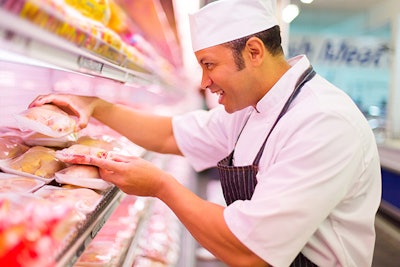
Poultry retail will need to adapt quickly to meet the cooking, shopping and ecommerce needs of consumers in 2022.
“What we’re looking at are not momentary blips in data, but things that matter and things that manufacturers and retailers can invest in,” Chris DuBois, senior vice president, IRI, explained during What’s Ahead in 2022?.
DuBois identified four consumer trends that accelerated in 2021 and are expected to have a long-term impact on poultry and food production in 2022 and beyond.
1. Confident cooking
During COVID-19, all consumers cooked more at home. However, in approximately 30% of consumers, there were dramatic changes in the ways they cooked during this time.
“What we saw was that people were very open to experimentation, buying different foods, and not only once, but repeatedly,” DuBois said. “That cooking behavior drives sales over and above what you would expect to see across a lot of different consumer groups.”
DuBois categorizes this consumer group as one of the most important for marketers. This consumer segment is currently driving 80-97% of growth in the meat department.
2. Premiumization
When the premiumization trend first emerged in 2020, many thought it was just a fad. But the category is holding firm across most categories. The trend is most prevalent in low income and middle-income shoppers.
“When you think about premiumization, think less about high priced products and think more about products that make people’s lives better,” he added, noting that many consumers now treat themselves to a more expensive cut of meat or fancier sides for less than they would spend at a family meal at a restaurant.
3. Innovation gold mines
2021 flipped a 20-year consumer trend. Previously, fewer than half of an average shoppers’ meals were prepared at home. This number rose to 80% in 2021. In addition, 48% of those employed plan to work from home at least one day a week in the next year, changing meal occasions and locations.
Meals at home are expected to continue to retain its importance in 2022.
“As a result, people bought a lot of goods” – from air fryers to instant pots to sous vide – that are designed to help consumers cook at home, DuBois said. These innovations have the potential to stick around long term and shape retail trends for the future. Successful marketers will find ways to help shoppers use these innovations with new recipes, instructional videos and more.
4. Food on demand
This consumer trend impacts both retail and foodservice.
“One of the big things we’ve seen is the digitization of how food is ordered,” said DuBois.
For foodservice, over 50% of orders came through an app for brands such as McDonald’s, Chipotle and Chick-fil-A in 2020 and 2021. Supermarkets are facing the same challenges and the past two years saw several brands open dark stores aimed specifically at fulfilling online orders.
Brands now face competition not just from local stores and restaurants, but from any company worldwide that offers items online.
“The store and the restaurant are now no longer the key focus of where you have to go to get food. What that means is that this is now a big challenge for CPG marketers and probably the biggest question is how do I get their attention when [consumers] are ready to make a decision?” he concluded.


















